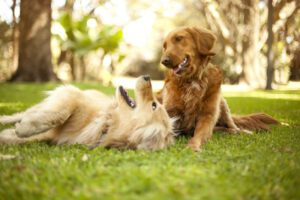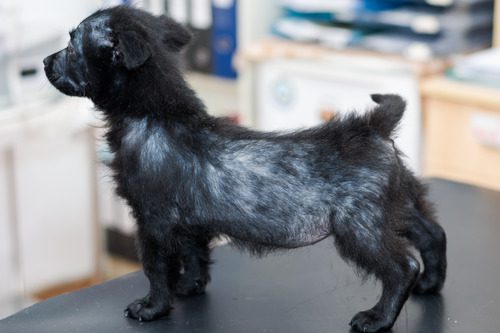Canine Body Language: Understanding What Your Dog is Saying
Dogs have been our faithful allies for thousands of years. As a species, they have evolved alongside humans, assimilating to our culture, and becoming an integral part of our families. While we use verbal cues to communicate with our dogs, their primary form of communication is body language. Understanding your dog’s body language is key to developing a strong bond with your furry friend and ensuring their well-being.
Body language is a form of nonverbal communication that dogs use to convey their feelings, desires, and aspirations. Dogs use a variety of physical cues to express themselves, such as ear position, tail wagging, and body posture. By learning to read these cues, you can gain valuable insight into your dog’s emotional state and behavior.
Happy Dog Body Language
A relaxed and open mouth can be a sign that a dog is feeling happy and content. When a dog is relaxed, it may have its mouth slightly open, with its tongue lolling out or hanging to the side. This is often accompanied by a soft panting sound, which can be a sign that the dog is comfortable and at ease.
- Tail wagging: As mentioned earlier, tail wagging is often a sign of merriment in dogs. Instead of one that is rigid or carried high, observe a tail that is wagging loosely and comfortably.
- Calm body: A happy dog will have a calm and agile body posture. They may stretch out, roll over, or lie down on their side, indicating that they feel secure and at ease in their environment.
- Soft facial expression: A happy dog will often have a tranquil and pleasant facial expression. Look for a slightly open mouth, relaxed tongue, and eyes that are soft and squinty.
- Playfulness: Happy dogs are often pulsating and enthusiastic. They may jump around, play with toys, or initiate play with you or other dogs.
- Relaxed ears: A dog’s ears can provide a fair indication of its emotional state. When a dog is happy, their ears will be relaxed and in a neutral position, rather than pushed back or firmly gripped against its head.
- Panting: Panting is a typical behavior in canines, but it can also be the manifesto of joy. Look for a dog that is panting gently with a relaxed tongue and mouth, rather than one that is panting heavily or excessively.
- Eye contact: Maintaining eye contact is confirmation that a dog is content and stress-free around you. Instead of a gazing or intense stare, seek out one that is at ease and quiet.
- Seeking attention: A happy dog may seek attention from you by nudging you with their nose, pawing at you, or leaning against you. This is a sign that they feel safe and comfortable around you and want to be close to you.

Scared Dog Body Language
Tail position: A anxious or fearful dog may tuck their tail between their legs or hold it low and steady.
Mouth: A dog that is feeling nervous and paranoid may have a closed mouth, with their lips pulled back and its teeth bared. This can be a sign that the dog is feeling threatened or unsafe and may be preparing to defend themselves if required.
Ears: Dogs that are agitated or dreaded may flatten their ears against their head or hold them out to the sides in a rigid manner.
Shaking or trembling: Dogs who are distressed or terrified may tremble or shake. This can indicate worry, fear, or anxiousness.
Avoidance: A apprehensive or fearful dog may make an effort to stay away from humans or other canines by retreating, hiding, or crouching.
Aggression: In some cases, a frightful or stressed-out dog may become aggressive. This can be a defensive response to a perceived threat.
Pacing: A restless or frantic dog may pace back and forth in a repetitive manner. This can be a sign of anxiety or restlessness.
Excessive barking: Dogs that are scared or stressed may bark excessively, especially if they feel threatened or cornered.
Excessive panting: Panting is a normal behavior in dogs, but excessive panting can be a sign of stress or anxiety. Look for a dog that is panting heavily, with a wide-open mouth and tongue hanging out.
By paying attention to your dog’s body language, you can learn to anticipate their needs and respond appropriately. For example, if you notice that your dog’s tail is tucked between its legs and its ears are flattened against its head, this may indicate that they are feeling scared or threatened. In this situation, it is important to give your dog space and avoid approaching them until they feel more comfortable.
Angry or Aggressive Dog Body Language
Stiff body posture: When a dog is angry or hostile, their body posture will be tight and strained. They may stand tall, with their head and tail held high.
Raised hackles: The hackles are the fur on a dog’s back that might rise when they are feeling threatened or obnoxious.
Showing teeth: Furious or aggressive dogs may show their teeth as a warning signal. This is a sign that they are feeling threatened and may attack if they feel provoked.
Growling or snarling: Growling is a clear sign that your dog is feeling resentful or intimidated. It is important to give your dog some room and avoid approaching them when they are growling.
Lunging or charging: A belligerent or enraged dog may lunge forward or charge at a person or other animal as a way of intimidating them.
Starring: An angry or hostile dog may fix its attention on a human or another animal. This is a method of establishing dominance and may be an indication that an assault is imminent.
Pinning ears back: When a dog is angry or aggressive, it may pin its ears back against its head. This is a defensive posture that can indicate that they are ready to attack if provoked.
Worried Dog Body Language
- Licking lips: Even if there is no food or water present, anxious dogs may lick their lips and noses.
- Whining or whimpering: Dogs may whine or whimper when they are worried or anxious.
- Shaking or trembling: A worried dog may shake or tremble, especially during stressful situations.
- Excessive yawning: If they are not exhausted, antsy dogs may yawn excessively.
- Reduced appetite: Dogs that are worried or anxious may have a reduced appetite or may refuse to eat altogether.
- Dilated pupils: A fretful dog may have dilated pupils, which makes their eyes appear larger than usual.
Conclusion
It is important to remember that canine body language can vary depending on the individual dog and the situation they are in. By learning to read and understand canine body language, we can better communicate with our dogs and provide them with the care and attention they need. Additionally, we can use this knowledge to help prevent negative interactions between dogs and humans, such as dog bites or other forms of aggression. Overall, understanding canine body language is an important part of being a responsible and caring dog owner.
If your dog is showing signs of dog aggression, anxiety, or any other worrying behavior, contact Best Friends Veterinary Hospital. Our veterinarians can assess your pet’s behavior and help to come up with solutions. Call us today for more information.
Recent Posts
About Best Friends Veterinary Hospital
Our veterinarians and staff warmly welcome dogs, cats, and a variety of exotic pets as patients here at our animal hospital, and we offer a host of services to give your unique family member a lifetime of excellent care.





